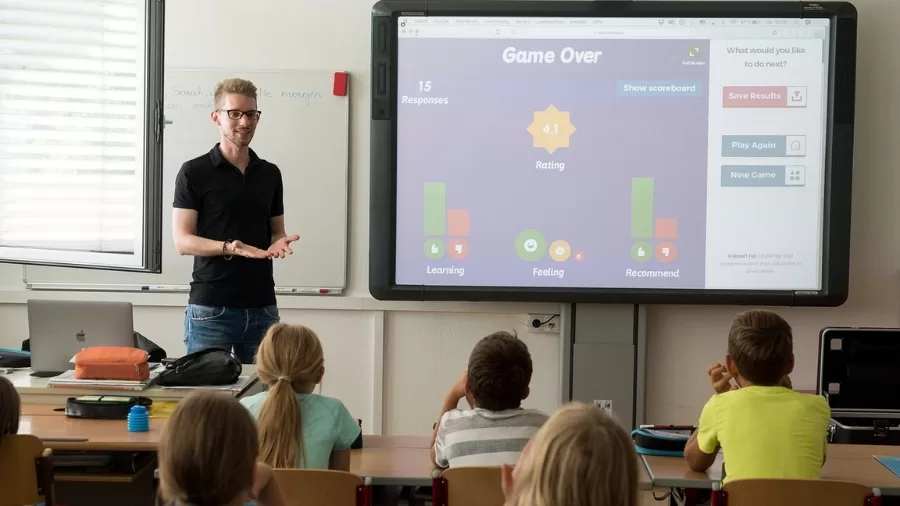Education
The Future of Learning: Top Education Technology Trends to Watch in 2025

- Artificial intelligence (AI) is the intricacy of computing technology, and further research in the field can attain growth in educational trends by associating product classes, courses, and designs with them.
- The education deliverance system is being moulded by the adoption of emerging topics such as microlearning, gamification, and artificial intelligence.
Remember those mad last-minute scurries through the notes just before exams? Stressful, yes, but more often a part of college life. But, then, come on, those were the days of education. However, where we are today, education has come very far from all this. Now, it is just not about texts and chalkboards. Technology leads the revolution in changing how we learn and teach, making education more dynamic and accessible than ever.
Despite the great convenience brought on by the digital age, most parents presently prioritise that, in everything, their children’s quality education is not overlooked. Despite this, like other numerous things of consequence, traditional education is now developing due to the massive reception of web resources and technology-based tools. Educational organisations are likely to be challenged to keep up with the rapidly developing advancements in such technologies and hence need to develop learning environments that will enable them to sustain these challenges in the future as best as possible.
Teaching these changes to parents makes sense, as well as for people in education professions and those who like to keep abreast of changes; it includes understanding what can be termed as the most important trends penetrating educational technology. These are instead the top five leading trends for 2025 that will show in education.
1. Microlearning: Quick, Bite-Sized Learning
Gone are the days of lengthy, meandering speeches. Shorter, more digestible learning sessions can outperform microlearning, characterised by breaking content into snappy, focused lessons, both in the educational and corporate domains. Proven to improve retention by up to 60%, it offers the flexibility to be highly efficient for busy professionals at what they do best in terms of learning.
As regards this issue, microlearning stands out by providing information in small bites, repeatable to drive engagement. It’s not about flexibility, but also about efficiency. Studies have proven that 83% of the group learning from small bits form and completion chances are higher than the traditional types of learning, only 20-30%. Companies and educational institutions would be hard-pressed to dismiss such a potential revolution in learning at a time close to when microlearning is adopted across the globe.
Businesses appreciate the essence of the need to adapt mobile-friendly microlearning strategies since learning now takes place. It is best to give information in the quickest form possible. In this sense, they can engage better and retain knowledge for longer using videos, infographics, and interactive quizzes.
2. Social-Emotional Learning (SEL): Harnessing the Potential of Emotional Intelligence
Emotional intelligence—the foundation of social-emotional learning (SEL)—is today’s soft skill of genuine import. Such soft skills are indispensable in modern education, where SEL is a part. Gaining emotional intelligence will now address the self, others, and emotions through various skills like recognising, understanding, regulation, and relating; in short, it will touch upon empathy, self-awareness, and speech. Research seems to suggest that emotional control and social awareness could be more critical for successful living and employment than most technical aspects.
In classrooms, and in addition to learning, of course, there are avenues like ClassDojo, which has been found down the years to best encourage students’ positive behaviours, keep teachers informed of students’ standings and progress, and inform parents of where to lend assistance. Integrating an SEL program into the curriculum will assure producing balanced young women and men who are capable of tackling life’s storms and are staffed with emotional intelligence. SEL matters at the academic level because employers today choose candidates who have outstanding interpersonal skills with a high emotional intelligence quotient.
If a business were to structure its SEL programs based on specific company training, it would help employees feel more connected, more likely to stay on the job, and possibly more productive on the job. For maximum impact, they require measurement through specific outcomes and objectives.
3. Making Learning Fun
Doesn’t education seem to be boring? The answer to this question is gamification, which does precisely this. The techniques present in a game, like competitive challenges, rewards, and scoring systems, are making teaching platforms more engaging, which adds motivation and engagement for a student. Gamified learning drives participation by turning learning into entertaining and interactive lessons.
The learning game has demonstrated a considerable rise in both retention of knowledge and student engagement. For instance, a gamified learning setup carried out at the University of Colorado showed that students using it improved in terms of factual knowledge by 11% and retention by 9% compared to others who did not use gamification. Brands such as L’Oréal are putting game concepts to use in their employee training, attesting to the positive outcomes that such gamified learning interventions can bring about.
In terms of gamifying learning experiences, both educational and corporate bodies can gain a lot from the game. This way, they turn learning objectives into quests, while badges are also offered with certificates for the furtherance and maintenance of enthusiasm, which ultimately leads to achieving educational goals.
4. Artificial Intelligence (AI)—The Future Teacher
In the current period, artificial intelligence changes African education by providing personalised knowledge sharing. However, AI technologies succeed in education by providing learners with a kind of all-hours tutoring and supporting educators concerning administrative tasks, such as marking and scheduling. In providing educators with extra time using automated processing of activities, the true purpose of teaching is established.
Learning experiences are customised to individual students’ progress in learning, such that instruction is provided to a person’s learning pace and those differences in learning style. For example, AI can help design language lessons for the skill level of the learner by using online platforms like Duolingo. Those learners sure do get challenged at the right level and time. Improvements that can be exploited by AI in the future for education are the rising power of wind beneath the wings of both teachers and students.
For enterprises, AI is very beneficial for learning and development. The benefits of personalising learning but remaining adaptive to the pace are tailored to content that leads the handsome way into the employee’s learning curve. The effectiveness of AI should be monitored to have a fair balance; even if it makes it easier to learn, it must not replace the human touch.
5. Mobile Learning: Education in Pockets of Time
Today’s always-on-the-move world mandates the growing importance of mobile learning (mLearning). Students, as well as employees, may learn from smartphones and tablets and may do so anywhere and anytime—it becomes much easier. For students whose time or money may not enable them to attend actual classes, this fact becomes attractive and flexible.
In little more than five years, according to predictions from the GSMA, 72 per cent of all internet users will no longer use computers to get online but will rely exclusively on their smartphones. Observers see this as the catalyst for the numbers in mobile learning. Through platforms such as Udemy, a significant diversity of courses is made available so that one can register directly on the smartphone and start studying without delay. For instance, mobile learning matches quite well with microlearning and gamification; therefore, learning open by bite will make sense to others.
Mobile learning keeps resource users up to date concerning the other received trends, as succinct learning chunks well represent empowerment.
Final Thoughts: Embracing the Future of Education
For an industry that used to have early signs of changes, degree enrolment software has now gained innovation and probably is going to become history as its further upgrades come at a high speed rate. These changes can be observed by only some of these words: microlearning, gamification, AI, SEL, and mobile learning. Education is changing at an exceptional speed due to all these programs being introduced in institutions. These programs make the learning experience more personalised, enjoyable, and available.
For those of us who are up-to-date, the sampling technologies also make it easier to see that everything about tomorrow’s education, and all changes in the sector, involves adapting, curiosity, or simply being willing to learn.


















































